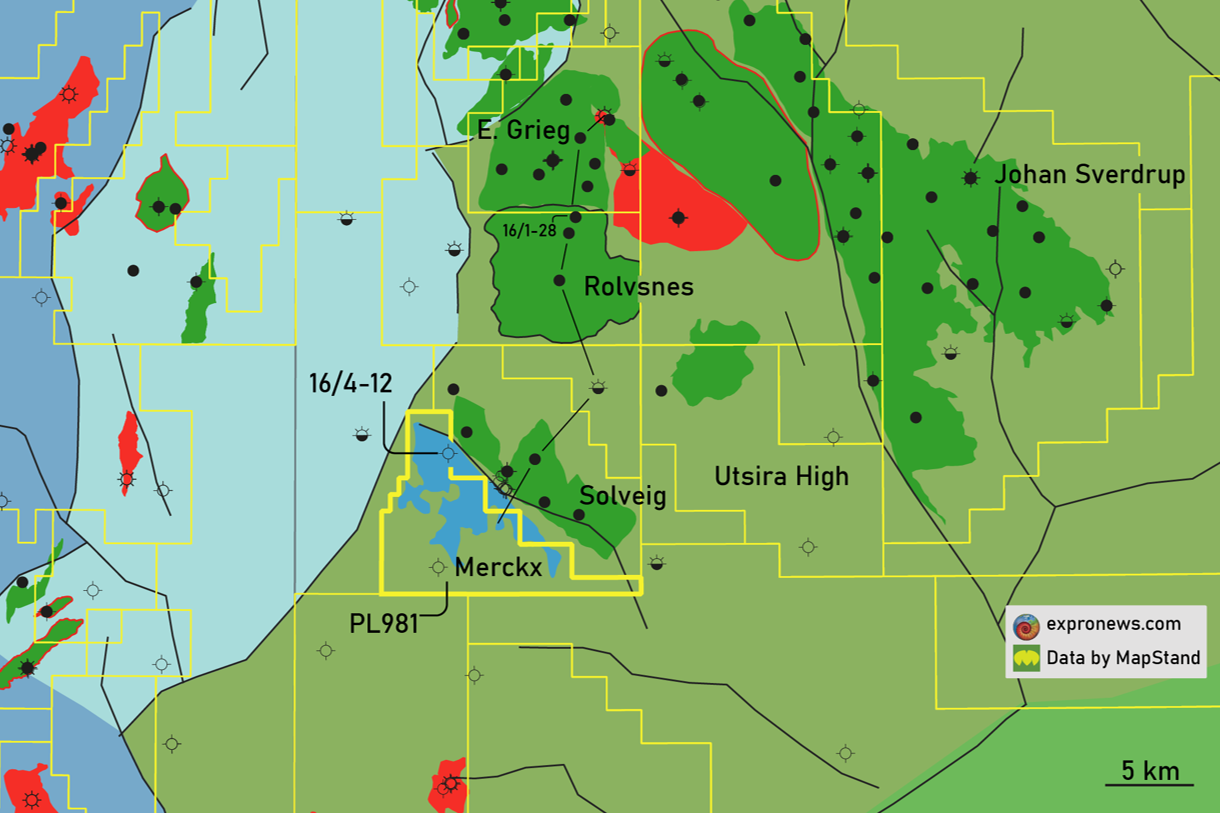In an attempt to add volumes to the Solveig development, Lundin and partner Aker BP have not been successful in proving hydrocarbons in the Merckx prospect in PL981.
Estimated to contain a potential gross volume of 152 MMboe, both the primary Paleocene and the secondary Permian Zechstein targets came in dry, even though 58 m of Paleocene Ty sandstone and 12 m of Zechstein dolomite were proven by well 16/4-12.
In our report on the well whilst it was drilling, we anticipated a Paleozoic sub-Triassic target, but did not consider the Paleocene to be the main target of the well.

An interesting comment in the press release is the mention of the presence of two sandstone intervals of undefined age between the Cretaceous and the Triassic. Could this be the (Upper) Jurassic transgressive sands that we already speculated to be there? Whether this observation is of any exploration significance or not remains to be seen.
At the upcoming NCS Exploration – Strategy Conference on 17-18 November, Kristin Færøvik, CEO of Lundin Energy, will give a presentation in the session “Believing in the NCS”.
Sele High
In the meantime, the Deepsea Stavanger drilling rig is now scheduled to move about 85 km to the east-southeast to drill another exciting well: 17/8-1.
Located on the Sele High, 17/8-1 will be the first well that will ever be drilled on this structural element, even though some wells drilled very close to the flanks. Targeting two separate closures named as Dovregubben, the main target of the well may be to test the thin Triassic/Permian succession on the high, or the deeper Paleozoic stratigraphy. Regardless, this will certainly be a well to keep a close eye on.
HENK KOMBRINK




